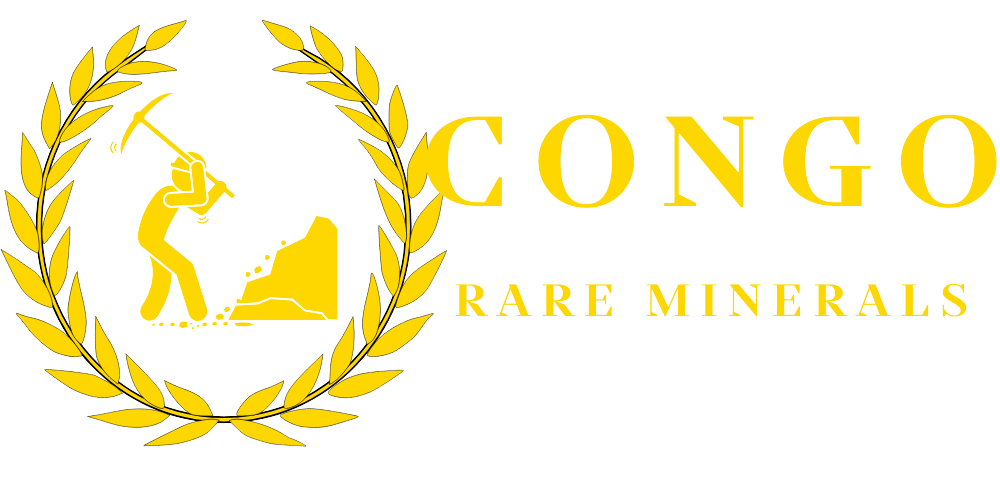Introduction: the next great gold story is being written in Africa
For decades, investors focused on mature mining districts in North America, Australia, and parts of Asia. Meanwhile, much of Africa’s gold potential remains underexplored. With advances in geology, data science, and traceability and a world hungry for safe-haven assets. Africa is emerging as the next growth frontier for serious gold allocators.
Congo Rare Minerals (CRM) sits at the center of this shift, giving buyers source-direct access to documented metal from the Democratic Republic of Congo (DRC) one of the continent’s richest, least-developed mineral regions.
Why Africa, why now?
1) Underexplored deposits and scale
Large sections of Africa have never seen the density of drilling and modern modeling applied in older districts. The DRC alone is widely cited with ~$24 trillion in untapped mineral wealth, and officials often note that ~90% of its minerals are still unexploited. That scale means runway: more discoveries, more development, and a deeper pipeline for future production.
2) Technology has changed the exploration math
- AI-assisted targeting: Machine-learning models fuse geochemistry, magnetics, radiometrics, and historical drilling to rank prospects faster and cheaper.
- Drones & remote sensing: High-resolution multispectral data and UAV magnetics reduce cost per square kilometer and speed up decision-making.
- IoT & digital twins: Sensor networks track equipment, ore movement, and tailings in real time, improving safety and throughput.
- Traceability & blockchain: On-chain custody logs pair bar serials with time-stamped events (export permits, assays, transport), strengthening compliance files for institutional buyers.
3) Structural demand uptrend
Central-bank accumulation, safe-haven flows, and portfolio diversification keep real-asset demand robust. When demand is steady, new, transparent supply corridors become more valuable especially those that can prove origin and legality.
The Source Advantage: why buying at the origin wins
Traditional dealer chains add markups and uncertainty. CRM’s model is different:
- Direct from licensed DRC operations → cut intermediaries, reduce premiums.
- Guaranteed provenance → full chain-of-custody documentation and independent refinery assay on delivery.
- Secure routing via Uganda → export processing with clear paperwork and delivery to mutually approved refineries (Dubai, Switzerland, Europe, China, USA).
- LBMA-linked contracts → predictable settlement aligned to institutional standards.
Highlighted advantages
- Source direct from the DRC
- Fully verified provenance
- Assay-on-arrival settlement
- Contracts that pass institutional due diligence
Strategic context: geopolitics meets growth
Africa’s gold isn’t just geology it’s strategy. Global supply chains are being re-drawn. The DRC’s geographic position and resource base make it a critical node for investors who want diversification from crowded channels. Meanwhile, UAE–Africa trade lanes and other cross-regional partnerships are deepening, creating efficient, compliant pathways from mine to market.
Ethical alternative: compliance is the new currency
Investors and refineries now demand conflict-free, documented supply. CRM aligns workstreams to OECD-style due diligence and LBMA-ready paperwork, so shipments clear audits not just customs. That unlocks banking, insurance, and resale liquidity, and it channels capital to schools, clinics, and jobs in the communities where we operate.
How technology improves risk-adjusted returns for buyers
- Better discovery odds: AI-ranked targets raise the hit rate for economic mineralization.
- Lower operating friction: IoT telemetry and predictive maintenance reduce downtime and costs.
- Tighter custody: Digital barcodes, on-chain events, and third-party assays create a defensible audit trail from pit to refinery.
- Faster settlement: Standardized documents and pre-booked assay protocols shorten cycle time from shipment to funds.
Practical playbook: investing in African gold the right way
- Decide your exposure mix
Use ETFs or futures for tactical liquidity. Use physical bullion for strategic reserves, wealth transfer, or collateral that must pass audit. - Insist on documentation
Demand mine-of-origin evidence, export permits, insurance, custody logs, and assay certificates matched to shipped weights. - Fix delivery & testing upfront
Name the receiving refinery, agree on the assay protocol, and specify LBMA-linked settlement in the SPA. - Choose clear routes
Plan transit via corridors that regulators recognize (e.g., DRC → Uganda → approved refinery). Clarity lowers exceptions and cost.
Where Congo Rare Minerals fits in your plan
- Access: Direct allocations from the DRC with fewer layers and cleaner pricing.
- Assurance: Independent assay on arrival; complete document packs for your compliance team.
- Reach: Delivery to refineries in Dubai, Switzerland, Europe, China, and the USA; vaulting support on request.
- Runway: As Africa scales exploration with AI and modern methods, CRM positions investors at the front of a long expansion cycle.
FAQ
Why not just buy from retail dealers?
Stacked markups and mixed provenance raise basis and risk. Source-direct lowers both and improves audit outcomes.
Can you deliver to my preferred refinery or vault?
Yes. We deliver to mutually approved refineries and can coordinate vaulting per mandate.
How is pricing set?
Contracts reference LBMA spot with agreed differentials for form, route, and quantity. Final settlement follows independent refinery assay.
What product forms are available?
Bullion bars, dore, dust, and nuggets, typically 96%–99.99% purity depending on product and contract.
Conclusion & CTA
Africa’s gold story is still early powered by underexplored geology, new technology, and global demand. If you want exposure that’s documented, deliverable, and defensible, start at the source.
Stop paying for middlemen and unclear paperwork. Secure your allocation at the source.
Contact Congo Rare Minerals to discuss volumes, routes, and current LBMA-linked terms for delivery to your preferred refinery.
